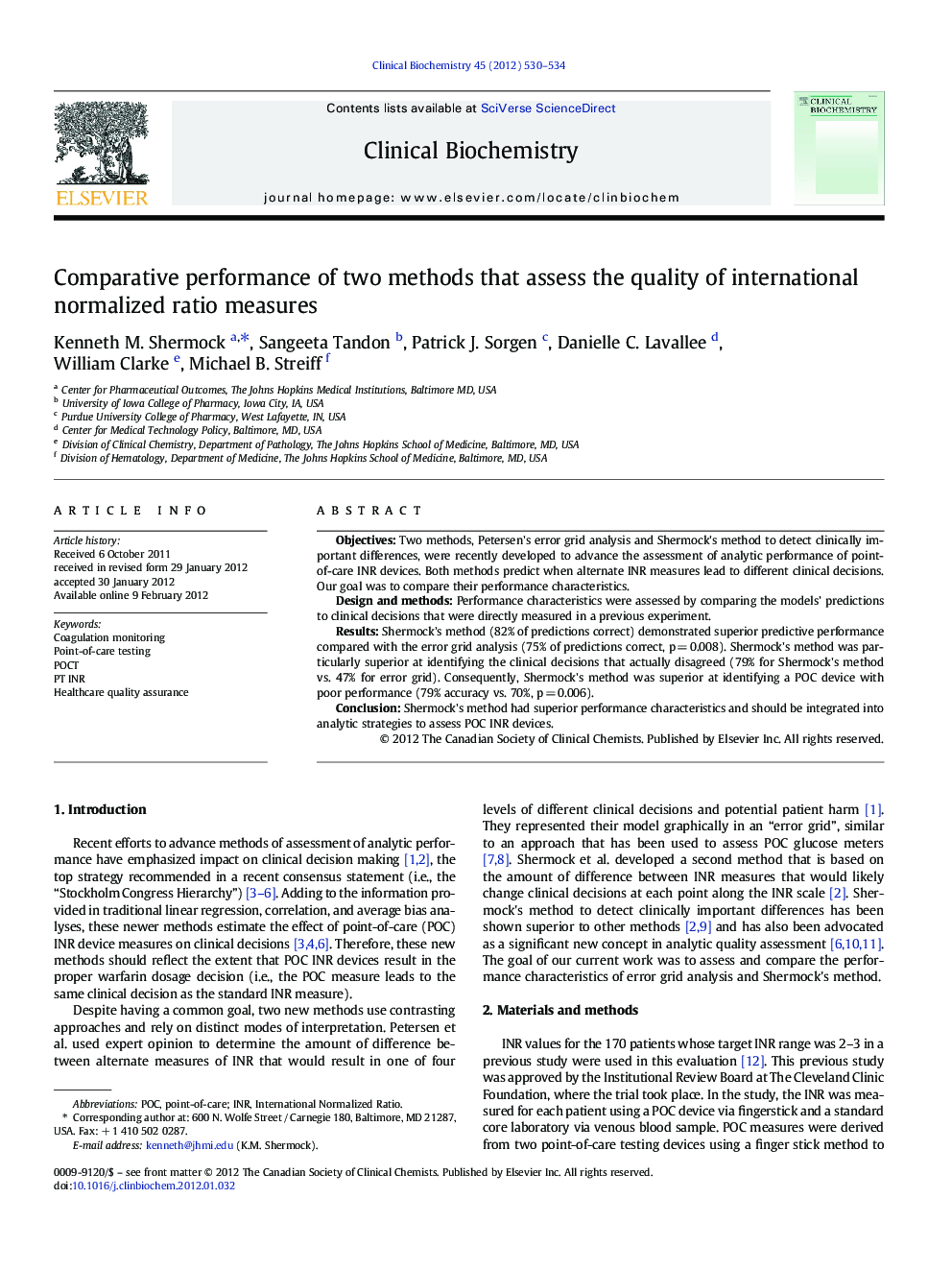| Article ID | Journal | Published Year | Pages | File Type |
|---|---|---|---|---|
| 1970487 | Clinical Biochemistry | 2012 | 5 Pages |
ObjectivesTwo methods, Petersen's error grid analysis and Shermock's method to detect clinically important differences, were recently developed to advance the assessment of analytic performance of point-of-care INR devices. Both methods predict when alternate INR measures lead to different clinical decisions. Our goal was to compare their performance characteristics.Design and methodsPerformance characteristics were assessed by comparing the models’ predictions to clinical decisions that were directly measured in a previous experiment.ResultsShermock's method (82% of predictions correct) demonstrated superior predictive performance compared with the error grid analysis (75% of predictions correct, p = 0.008). Shermock's method was particularly superior at identifying the clinical decisions that actually disagreed (79% for Shermock's method vs. 47% for error grid). Consequently, Shermock's method was superior at identifying a POC device with poor performance (79% accuracy vs. 70%, p = 0.006).ConclusionShermock's method had superior performance characteristics and should be integrated into analytic strategies to assess POC INR devices.
► Two new methods assess analytic performance of point-of-care INR devices. ► We compared their predictions against clinical decisions that were directly measured. ► Shermock's method (82% of predictions correct) demonstrated superior performance. ► Shermock's method should be integrated into analyses of point-of-care INR devices.
